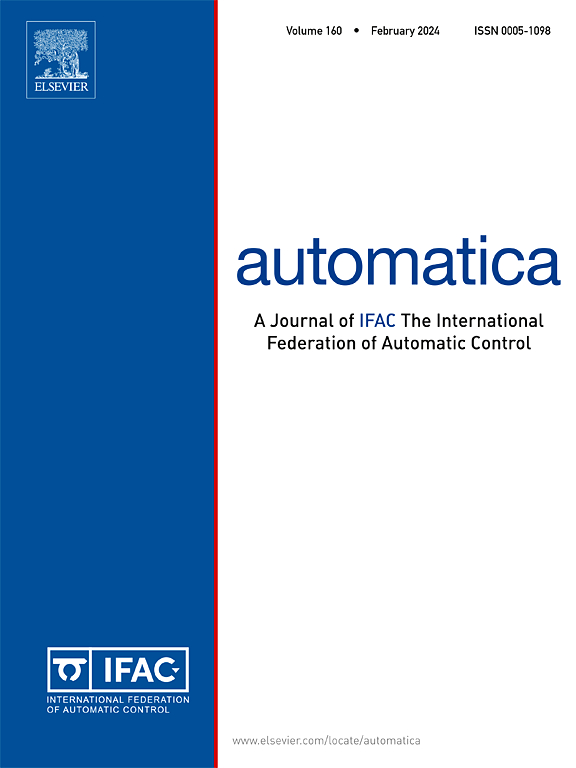Robust fault detection method based on interval neural networks optimized by ellipsoid bundles
IF 4.8
2区 计算机科学
Q1 AUTOMATION & CONTROL SYSTEMS
引用次数: 0
Abstract
In this paper, a novel framework for interval prediction neural network model optimized by ellipsoid bundles is designed for data-driven systems with unknown but bounded noise and disturbances. Firstly, a point prediction neural network model is constructed with input and output data, the prediction error is assumed to be unknown but bounded. Then, a feasible set related to the output weights of the neural network model is described by ellipsoid bundles, which allows decreasing conservatism compared to other types of sets such as zonotopes or ellipsoids. To obtain a more precise description shape of the feasible set, an optimal iterative formula is theoretically derived by minimizing the Frobenius norm of ellipsoid bundles. Next, an outer bounding box is established to obtain the maximum and minimum weights that satisfy the feasible set, thereby providing the output prediction interval. This interval characterizes the systems’ disturbance and can be used as the threshold when dealing with fault diagnosis applications. Finally, the effectiveness of the proposed interval neural network model is demonstrated by using faulty data from a wastewater treatment process. Simulation results verify that the proposed method can achieve accurate prediction outputs and fault diagnosis performance.
基于椭球束优化区间神经网络的鲁棒故障检测方法
针对具有未知有界噪声和干扰的数据驱动系统,设计了一种基于椭球束优化的区间预测神经网络模型框架。首先,利用输入输出数据构建点预测神经网络模型,假设预测误差未知但有界;然后,用椭球束来描述与神经网络模型输出权值相关的可行集,与其他类型的集(如分区或椭球)相比,其保守性降低。为了获得更精确的可行集描述形状,通过最小化椭球束的Frobenius范数,从理论上推导出最优迭代公式。然后,建立外边界框,得到满足可行集的最大和最小权值,从而给出输出预测区间。该区间表征了系统的扰动程度,可作为故障诊断应用的阈值。最后,以某污水处理过程的故障数据为例,验证了区间神经网络模型的有效性。仿真结果验证了该方法能够获得准确的预测输出和故障诊断性能。
本文章由计算机程序翻译,如有差异,请以英文原文为准。
求助全文
约1分钟内获得全文
求助全文
来源期刊

Automatica
工程技术-工程:电子与电气
CiteScore
10.70
自引率
7.80%
发文量
617
审稿时长
5 months
期刊介绍:
Automatica is a leading archival publication in the field of systems and control. The field encompasses today a broad set of areas and topics, and is thriving not only within itself but also in terms of its impact on other fields, such as communications, computers, biology, energy and economics. Since its inception in 1963, Automatica has kept abreast with the evolution of the field over the years, and has emerged as a leading publication driving the trends in the field.
After being founded in 1963, Automatica became a journal of the International Federation of Automatic Control (IFAC) in 1969. It features a characteristic blend of theoretical and applied papers of archival, lasting value, reporting cutting edge research results by authors across the globe. It features articles in distinct categories, including regular, brief and survey papers, technical communiqués, correspondence items, as well as reviews on published books of interest to the readership. It occasionally publishes special issues on emerging new topics or established mature topics of interest to a broad audience.
Automatica solicits original high-quality contributions in all the categories listed above, and in all areas of systems and control interpreted in a broad sense and evolving constantly. They may be submitted directly to a subject editor or to the Editor-in-Chief if not sure about the subject area. Editorial procedures in place assure careful, fair, and prompt handling of all submitted articles. Accepted papers appear in the journal in the shortest time feasible given production time constraints.
 求助内容:
求助内容: 应助结果提醒方式:
应助结果提醒方式:


